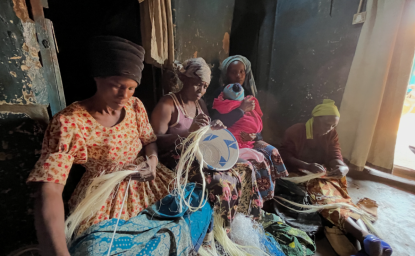Danish anthropologist Karsten Paerregaard spent eight years living in the highlands and the major cities of Peru, interviewing migrants and tracing their path. Many Peruvians have migrated from their rural villages to the cities in search of jobs and better schools, and to participate more fully in national life. "They want to be visible as if to say ‘we're citizens here,'" said Paerregaard, currently a Wilson Center fellow.
Peru, a nation of 28 million, is a society of inequality where jobs are increasingly difficult to find. So in addition to domestic resettlement, some two million Peruvians have emigrated during the last two decades to find work. They have settled all over the world, from the United States to Spain to Japan. And, Paerregaard said, they tend to disperse throughout a country. In the United States, Peruvian communities have sprung up from Los Angeles to Paterson, New Jersey.
The bulk of Peruvian emigrants send remittances to their families back home. "A major concern in the United States and Europe is how migration affects the developed world," said Paerregaard. "But what happens to the developing world?"
While some global institutions consider remittances a solution to Third World problems, Paerregaard argues that remittances are but a symptom of a larger problem, as they won't solve the country's economic problems; they do not create desperately needed jobs back home. Remittances in Peru comprise only two percent of GNP, said Paerregaard, "and while they help households in poor areas, they do not substitute for the lack of support from the state."
Peru is a leading exporter of minerals and increasingly an exporter of agricultural products. The country has not experienced decreased economic growth despite the global financial crisis, but job creation remains stagnant. "Capital is flowing, so why not people?" asked Paerregaard. "Maybe Peru will become a country that attracts migrants one day."
In the meantime, Paerregaard is studying the daily life of migrants and the effects of remittances back home. As an anthropologist who looks at "the ordinary of the extraordinary people," his research includes those living on the margins of society, many of them poor.
In one case, an 80-year-old Peruvian man living at a retirement home in Washington had sent $200 every month to his children in Peru since arriving in the United States back in 1962. But when he retired, he informed his children he could no longer afford to send the remittances, so the children cut off contact with him. Paerregaard said this story illustrates the emotions and expectations tied to a lifetime of remittances.
Another kind of remittance came from a Peruvian emigrant also in the Washington area who managed to raise $100,000 and sent it back home for a weeklong saint's day fiesta.
Paerregaard, on sabbatical from the University of Copenhagen, is collecting dozens of stories to write a biography of remittance. Their stories are varied and colorful, and help to paint a picture of generational, gender, and class relations in Peru.





